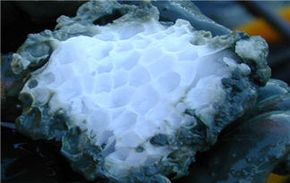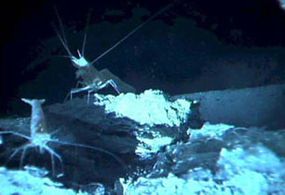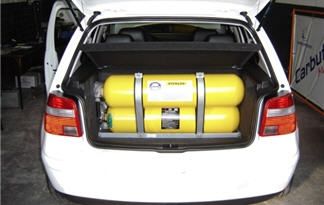Natural gas hydrates are ice-like structures in which gas, most often methane, is trapped inside of water molecules. Unlike the ice we’re all familiar with that’s derived entirely from water, gas hydrates are in fact highly flammable, a property that makes these crystalline structures both an attractive future energy source as well as a potential hazard.
Hydrates are a much more abundant source of natural gas than conventional deposits. According to the U.S. Geological Survey, global stocks of gas hydrates range account for at least 10 times the supply of conventional natural gas deposits, with between 100,000 and 300,000,000 trillion cubic feet of gas yet to be discovered.
Advertisement
If these sources of natural gas could be safely, efficiently and cheaply tapped into, gas hydrates could potentially displace coal and oil as the top sources of the world’s energy. But that’s a big "if."



